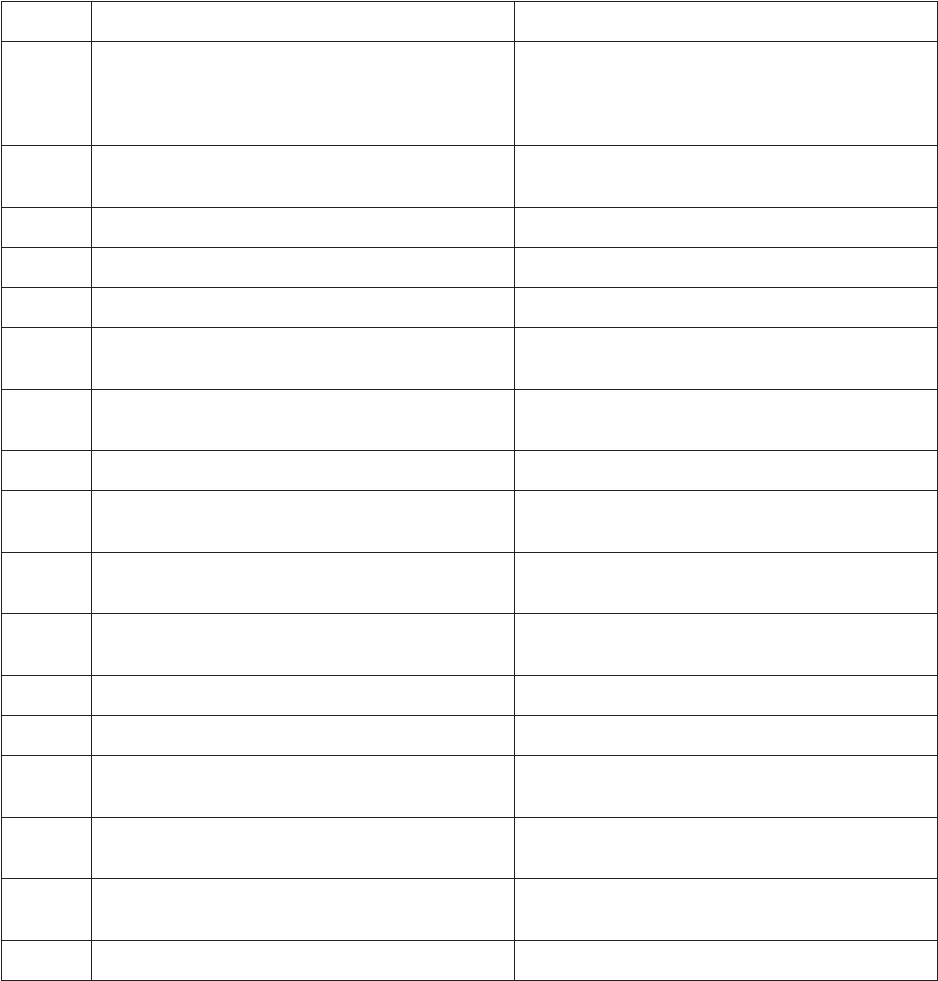
C1553M-B (4/05) 121
Table C. Symbols Used to Build Patterns
Delete a Pattern From the Predefined Pattern List
1. On either the Pattern To Match tab or the Reset Pattern To Match tab, click Pre-defined, and then click Select. The Pre-defined Patterns list
opens.
2. Click the pattern that you want to delete. You can only delete patterns that were created as custom patterns and then saved to the Pre-
defined Patterns list with the Make Pre-defined feature. You cannot delete the predefined patterns that are provided with VMX300(-E).
3. Click Delete. The pattern is removed from the list.
4. Click Custom to return to the Pattern To Match tab or the Reset Pattern To Match tab.
SYMBOL MATCHES EXAMPLE
\ Marks the following character as a special character or a
literal.
Special character: \w is a special character that matches any
letter, number, or the underscore (see below).
Literal: \$ means to ignore the special value of $ and match
the literal $. Similarly, \\ matches \ and \( matches (.
\w Matches any letter, number, or the underscore.
Equivalent to [a-zA-Z0-9_].
ALARM\w matches ALARMx and ALARM9 and ALARM_,
etc.
^ Matches the position at the beginning of an input string.
$ Matches the position at the end of an input string.
* Matches the preceding subexpression zero or more times. zo* matches z and zo and zoo and zooo, etc.
+ Matches the preceding subexpression one or more times.
Equivalent to {1,}.
zo+ matches zo and zoo and zooo and zoooo, etc.; does not
match z.
? Matches the preceding subexpression zero or one times.
Equivalent to {0,1}.
zo? matches z and zo. Does not match zoo.
. Matches any character except \n (newline). To match any character including newline, use [.\n].
{n} Matches exactly n occurrences of the previous character or
group of characters.
o{2} matches root. Does not match rot or rooot.
{n,} Matches at least n occurrences of the previous character or
group of characters.
o{2} matches root and rooot and roooot, etc. Does not match
rot.
{n/m} Matches between n and m occurrences of the previous
character.
o{2,3} matches the first three o’s in rooooooot.
x|y Either x or y g|food matches g or food. (g|f)ood matches good and food.
[abcde] A character set. Matches any one of the enclosed characters. [abcde] matches the a in plain.
[^abcde] The complement of a character set. Matches any single char-
acter not enclosed.
[^abcde] matches the p in plain.
[a-e] A range of characters. Matches any character in the specified
range.
[a-e] matches any lowercase alphabetic character in the
range a-e, that is a, b, c, d, and e.
[^a-e] The complement of a range of characters. Matches any char-
acter not in the specified range.
[^a-e] matches any character except a, b, c, d, or e.
(abc) A grouping of characters. do(es)? matches do and does. Does not match doe or dos.


















